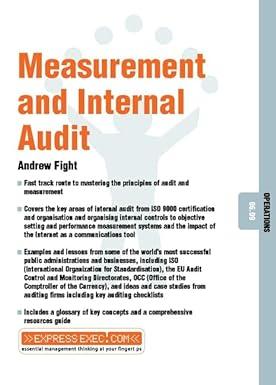Question
The article GM to Take Charge of $20.8 Billion here reproduced from The Globe and Mail (February 2, 1993) describes the potential impact of SFAS
The article GM to Take Charge of $20.8 Billion here reproduced from The Globe and Mail (February 2, 1993) describes the potential impact of SFAS 106, Accounting for Postretirement Benefits Other Than Pensions, on General Motors and Ford. SFAS 106 was a 1990 FASB accounting standard that required firms to accrue a liability for estimated retirement benefits, such as health care. Previously, such costs were accounted for on a pay-as-you-go basis, under which the expense for the year equalled the cash paid out for retiree benefits during the year. From the article, General Motors planned to record a liability of $20.8 billion, reducing its shareholders equity by about 75 percent, from $27.8 billion to $7 billion.
AtlantaGeneral Motors Corp. will take a $20.8 billion (U.S.) charge against 1992 earnings to account for a new way of estimating retiree health care costs, the automakers directors decided yesterday. The charge, which will not affect the struggling automakers cash flow, will leave GM with the largest annual loss of any U.S. corporation, eclipsing the companys 1991 loss of $4.45 billion, which was a record at that time. Including accounting changes, other charges and losses on its North American operations, GMs 1992 loss could approach $23 billion. The $20.8 billion is a non-cash charge. It reduces GMs net worth to about $7 billion, still sufficient to pay stock dividends under the laws of Delaware, where GM is incorporated. Separately, GM said it would take a $744 million fourth-quarter restructuring charge for its National Car Rental Systems business. In a recent U.S. Securities and Exchange Commission filing, GM estimated that charge at about $300 million. The accounting change, required by the Financial Accounting Standards Board of all publicly traded U.S. companies, has had a major effect on each of the Big Three U.S. automakers. Ford Motor Co. said it would take a $7.5 billion charge against 1992 earnings to account for the change. Chrysler Corp. said it has not decided whether to take its $4.7 billion charge as a lump sum in the first quarter or spread it over 20 years, as the standard allows. GM had estimated its charge for adopting the new accounting standard at $16 billion to $24 billion. The $20.8 billion actual charge includes its workers, GM Hughes Electronics Corp. and its financial subsidiary, General Motors Acceptance Corp. The companys EDS Corp. subsidiary does not pay health benefits, so it was exempt.
Question:
Assume GM had chosen to spread the charge over 20 years rather than as a single annual charge. In this case, in an efficient market, would the market reaction to the write-off differ? Explain why or why not
Step by Step Solution
There are 3 Steps involved in it
Step: 1

Get Instant Access to Expert-Tailored Solutions
See step-by-step solutions with expert insights and AI powered tools for academic success
Step: 2

Step: 3

Ace Your Homework with AI
Get the answers you need in no time with our AI-driven, step-by-step assistance
Get Started


